Painting skin tones is one of the most challenging aspects in painting. In part, because (with skin of our own) we often have a certain idea of what a skin tone color is and what it looks like. However, when you closely observe the flesh tones of the subject you are painting, you will notice a vast variety of elements (and different colors) that actually exist.
One of the most important aspects you need to consider when it comes to painting skin tones, is color temperature. As color temperature plays a prominent role in defining the specific colors (and values) you will need to mix for your subject’s skin. Let’s get started by touching on the truth about what colors you need for painting skin tones.
What colors make up skin tones?
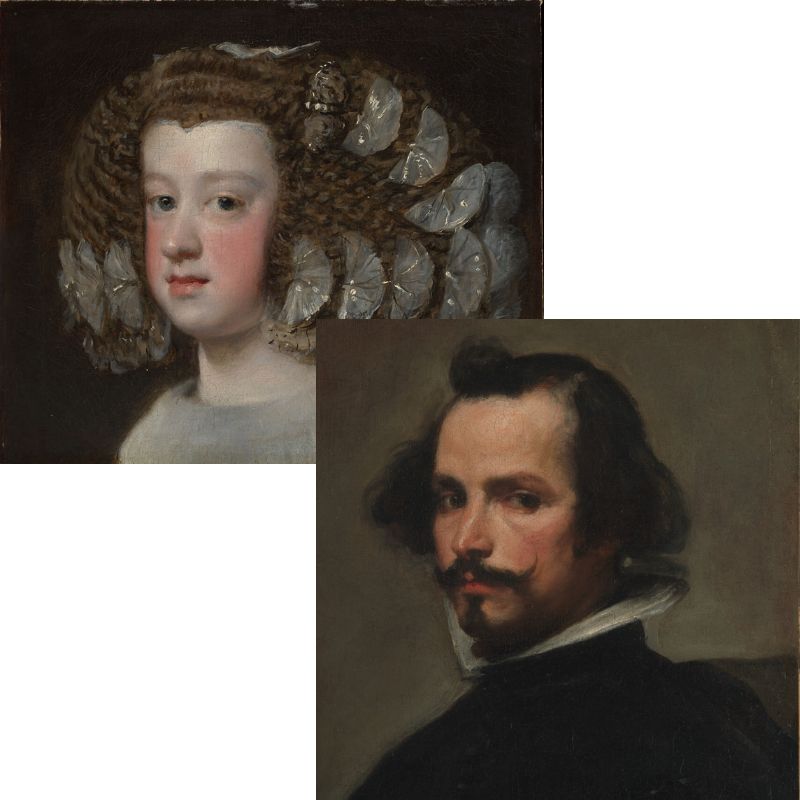
The truth is, there really is no such thing as a specific ‘skin color’. Reason being, is that skin is an organic surface and therefore its local color changes throughout, as the degree of light on the surface changes.
Of course you can learn how to mix different skin tone colors once you understand the colors you need. However first you need to know how to look at and breakdown your subject by the actual temperatures and values that are present. For example, you might have dark/cool colors in one area and light warm colors in another. Continual changes in color temperature are what make painting skin tones so challenging and exciting!
Color temperatures of skin tones
Below we have a diagram highlighting various color temperatures present in the skin tones of the painting, featuring Hans Holbein’s Portrait of Robert Cheseman.
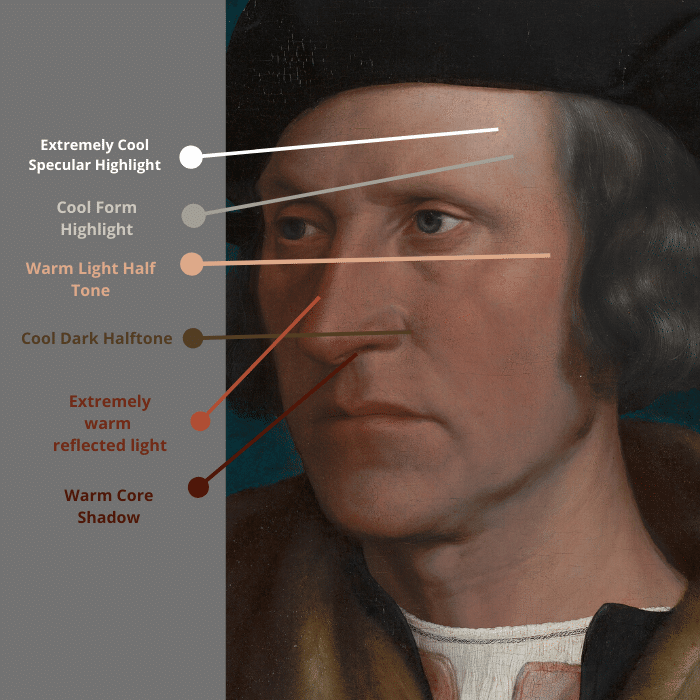
The painting is a great example of how to paint skin tones with a classical order of light in its tonal value and color shading. You will see how the temperature varies as the light moves from light to dark. The real warmth in the painting occurs in the light halftone and the skin cools significantly in the dark halftone.
Classical order of color temperature
The diagram above illustrates the classical ordering of how color temperature looks in a portrait painting. This is how light behaves in a typical north light scenario – therefore you see this very same pattern of color temperature in all of western art.
A very similar pattern of color temperature can be seen in many different classical paintings. As they were painted in cool north facing light – typical of Western artists studios. The diagram is not meant as a formula but rather to get a foothold in understanding how colors change. As well as how color temperature works when painting skin tones and flesh.
Apply order of color temperature to your own work
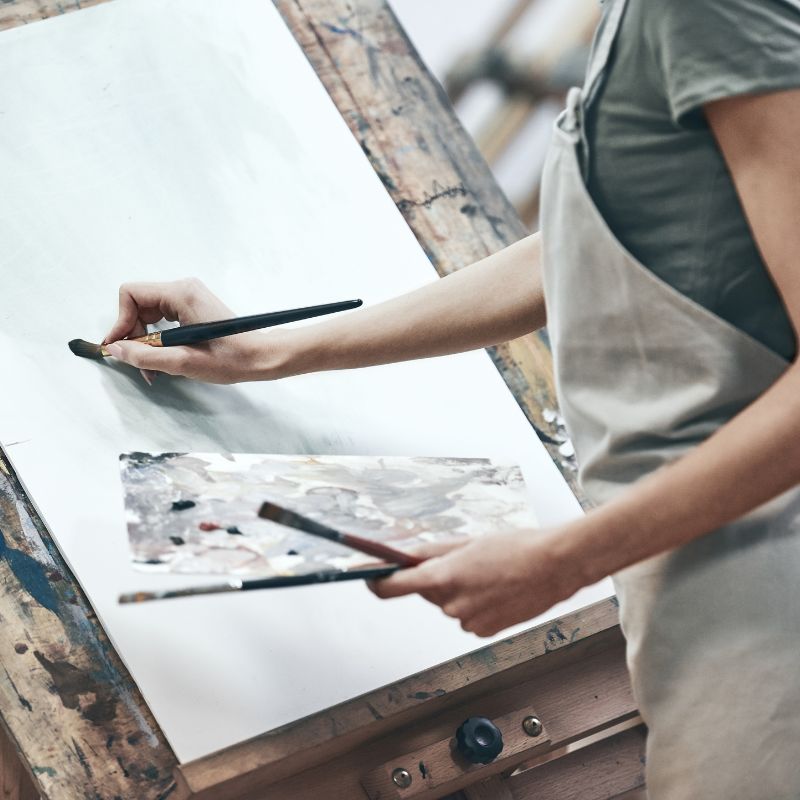
I encourage you to study other old master portrait paintings and how color temperature is distributed in the highlight, halftones, reflected light etc. You will see a pattern across all of the paintings. When you very carefully observe how color temperature and light look in real life you see this very same pattern play out.
Color temperature (of skin tones) in paintings examples
Below is a diagram of a detail from, ‘Portrait of a Man’ by Velazquez. In the close up of the forehead area, you can see how the colors and temperatures shift as the light moves across the surface.
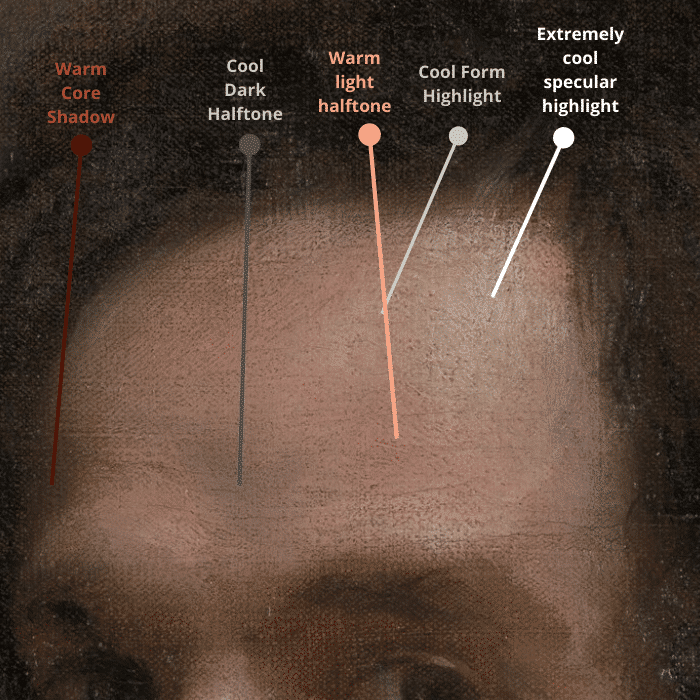
The more you look for these breakdowns in color temperature shifts. The easier it will become to recognize them. Applying these shifts will help you create truly realistic looking skin tones.
Let’s look at another example, of a subject that contains darker skin tones.
Color temperature in darker colors
Color temperature reacts the same no matter if you are painting dark or light skin tones. Below is an example of a painting done with darker skin colors – Juan de Pareja by Velazquez. You can see in the detail of the nose how the same pattern of color temperature can be seen.
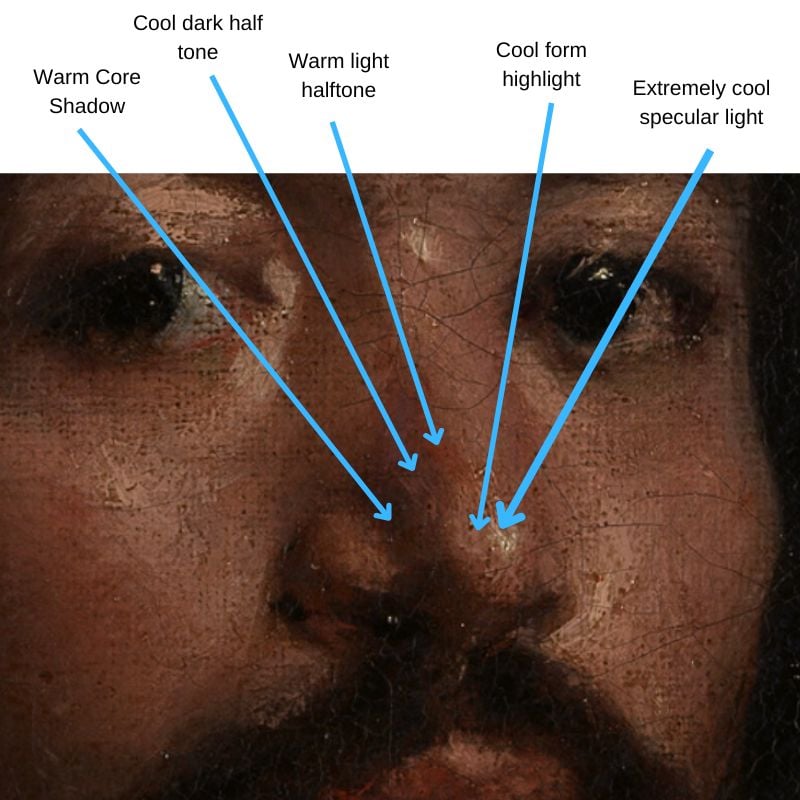
Color palette for painting skin tones
I recommend to use a full palette for portrait painting. As you need to be able to mix many different kinds of warm and cool temperatures it is important to have a variation of cool and warm colors. When painting skin tones you encounter all sorts of different colors. Therefore, it is important to have a full range of colors available to you because of that.
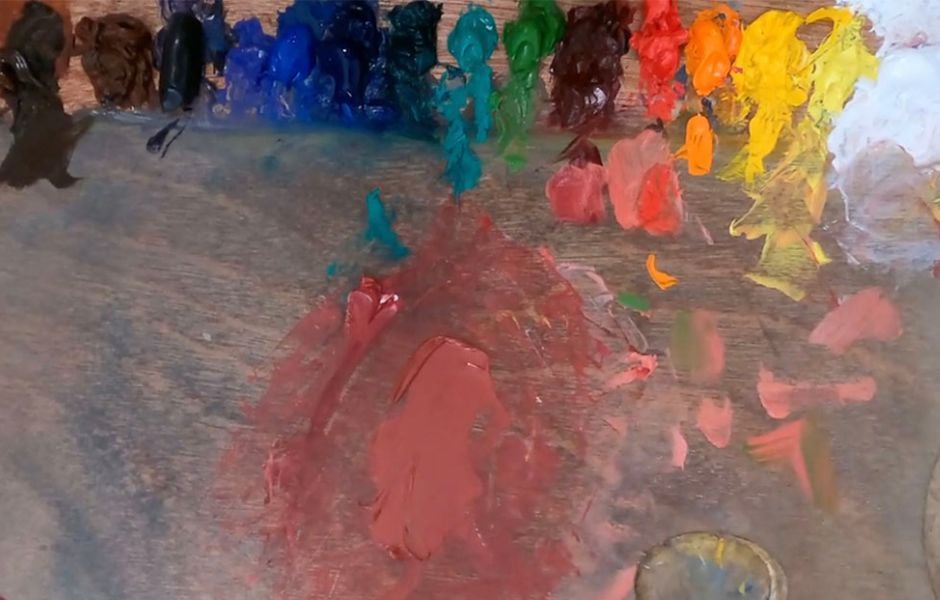
How to mix flesh tone colors
That said, you might be wondering how you go about actually mixing basic skin tone colors.
The mixtures you create depends widely on how dark or light and cool or warm your skin tones are. For example, you might paint a portrait of someone with very light skin tones with pink undertones. The mixtures you create will in general be warmer than if you paint someone with darker skin but cool undertones.
Starting point for mixing skin tones
A good starting point is to mix a large amount of paint for your base middle tone color. You can use this color to mix up subtle variations.
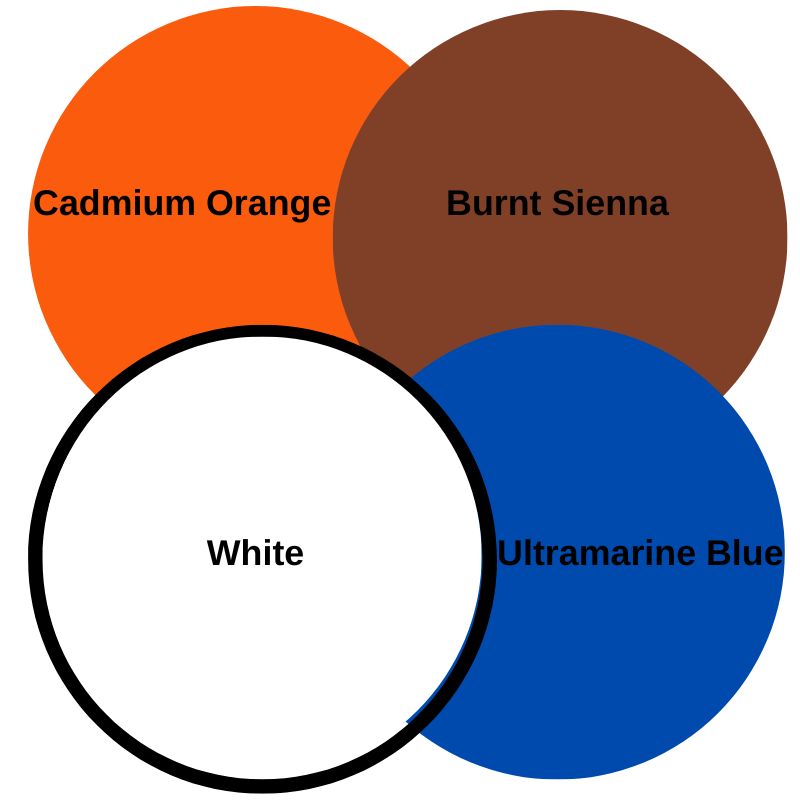
Cadmium orange, burnt sienna, white and ultramarine blue (as a complementary color) is a good basic base. You will use more or less of some of the colors depending on how dark or light a skin tone is.
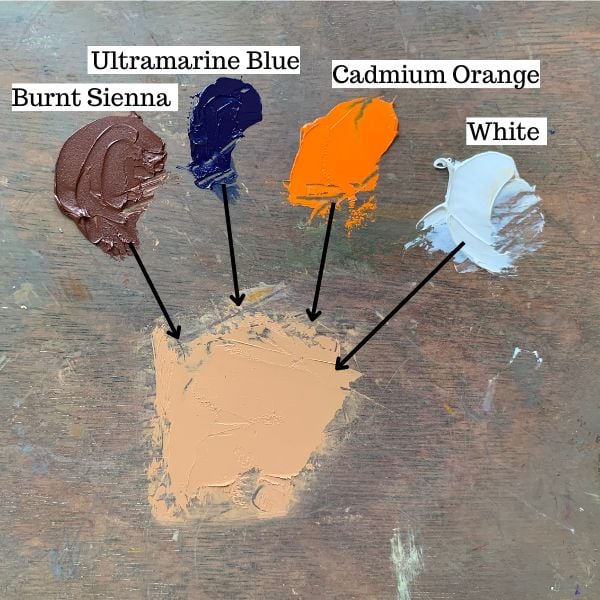
Of course you will need to mix in different colors to adjust for subtle changes – but this mixture can be a good starting point.
Mixing cool and warm skin tone colors
To make a skin tone warmer or cooler you would make use of your warm and cool colors. Often you can tell if a cooler skin tone color looks bluish or green. You can then mix a little bit of one (or both) of those colors to your base skin tone color.
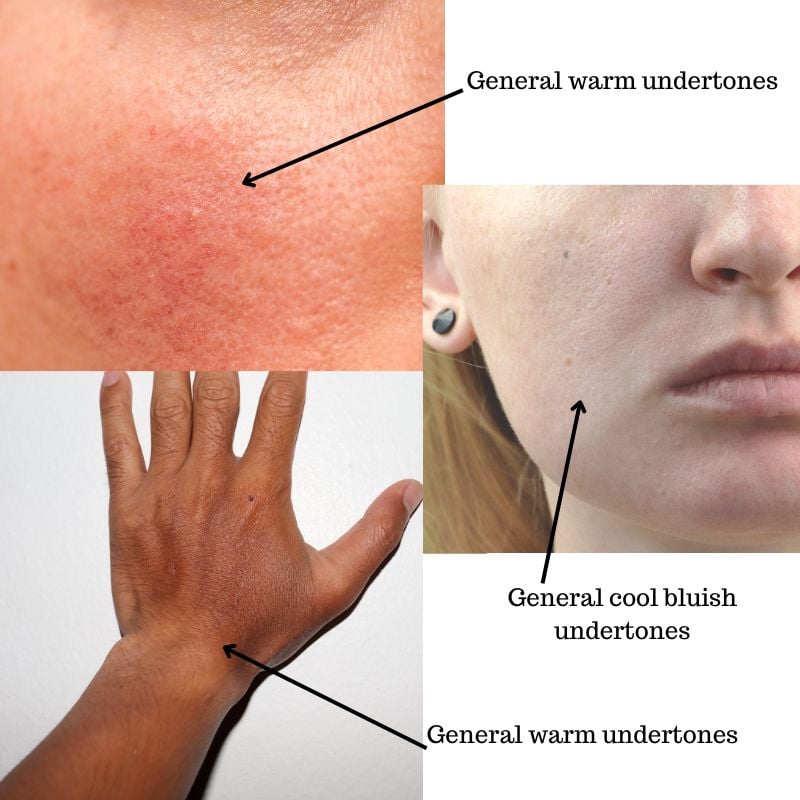
If a particular skin tone looks warmer, then mix a warm color with it such as red or orange.
Next steps…
There is an extraordinary amount of nuance involved in mixing skin tone colors. What I outline here is just a starting point. If you want to take things further, then I recommend learning more about how color works – this way you can get outside of typical color mixtures and get much more precise with painting skin tones.

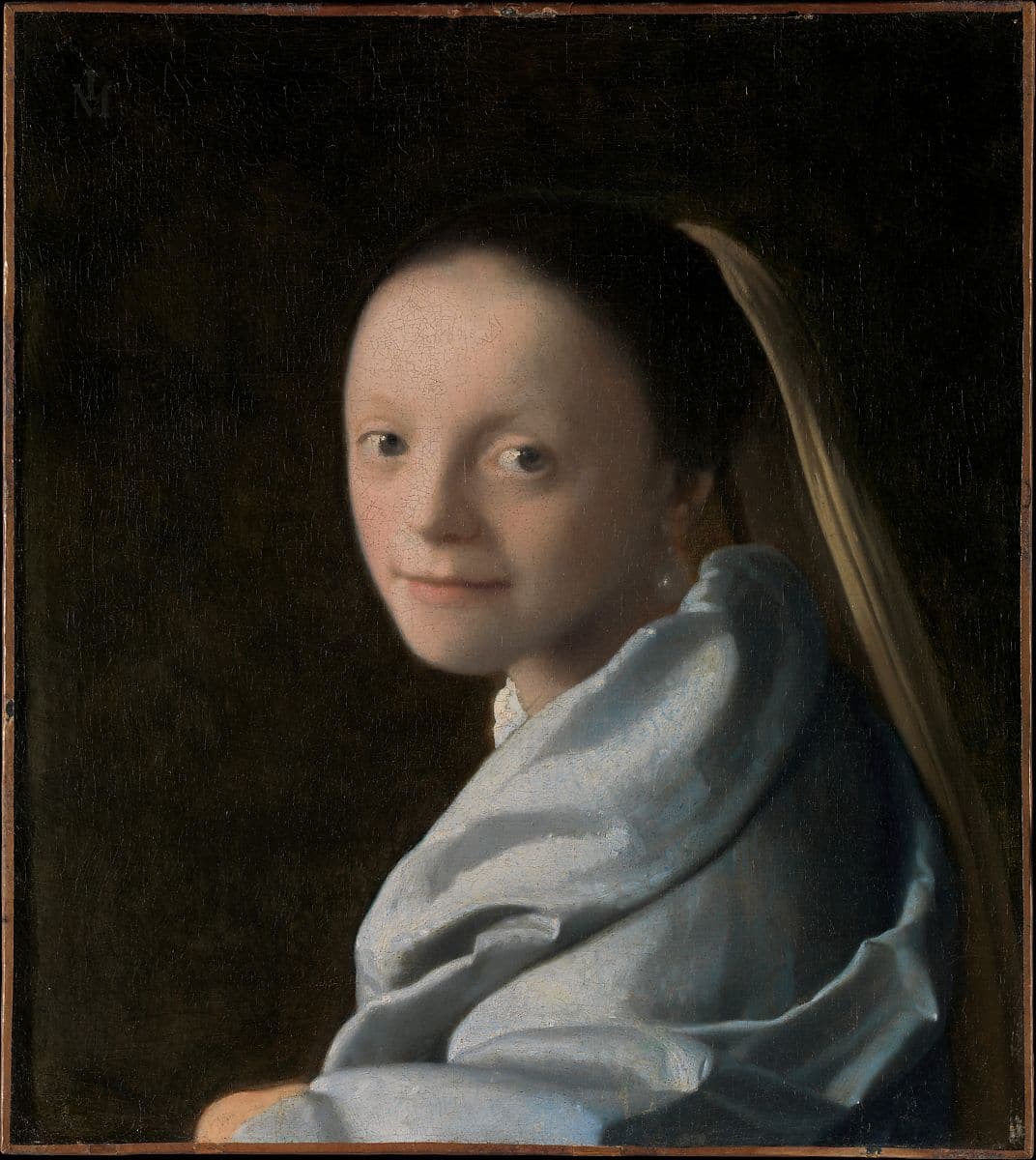




38 thoughts on “Painting Skin Tones and the Importance of Color Temperature”
Hello from sunny France……well not quite so sunny at the moment with the storm kirk and flooding! Weather better today though.
I am painting a portrait and having trouble with shadows. What colours do I mix now I have the basic flesh colour done.
Terry.
Thank you for your comment! Hope the weather is now a little b it better! In regards to painting shadows on a portrait it truly depends on a lot of things. What the color temperature is, value, lighting etc. However, a good place to start is having cadmium orange, ultramarine blue, white, burnt sienna, purple, cad yellow, red on hand. Mixing blue and orange together will give you a neutral dark color – you likely will need to mix in a little bit of white and perhaps some red (or burnt sienna) and or yellow. I hope that helps!
Hi Elizabeth
I bought your book and just love it , as I often struggled with mixing colors. But your book makes it so easy to understand.
Also love all the emails I get with tips for painting or drawing. I so look forward when they arrive. Thank you so much for all the work that must have gone into sharing this.
Kind Regards
Sonja
Thank you Sonja for your kind words, I so appreciate it! Am very happy to hear that you have been enjoying my color mixing master guide as well as the e-mails that I send out. It is my pleasure to share.
What are the basic colors do you mix to come up with skin tones
Hi Rommel, It widely depends on the kind of skin tone you are mixing. However, a good basic skin tone mixture can be made with cadmium orange, ultramarine blue, white, and some burnt sienna. It might also be helpful to have some yellow with that basic mixture as well. Hope that helps!
I enjoyed reading and looking at the illustrations. Thank you for the advice
Glad you enjoyed and this was helpful for you!
Many Thank you’s ..
Planning on trying to paint over photos !!!! Open to advise , Ty
Glad you enjoyed! 🙂 Painting over photos can be a good way to learn how to mix certain colors. But with time I do recommend then painting on your own – not over photos but on blank canvas. This will allow you the freedom to create your own work.
Thanks for the information Elisabeth, I will use this information in my portraits. It is still very hot here, and I have had to return to teaching two days a week, due to a lack of teachers in rural areas. So have deferred the painting weekend until we have cooler weather. I might use this information for the session.
regards
Warren Petherbridge
Good to hear from you Warren! You are very welcome for this info! Sorry to hear that it is still hot where you are. That is wonderful that you are teaching in your area – but am sorry to hear that there is a lack of teachers there. Kind regards to you!
I am painting portraits and would like an easy guide to finding the right color mixes. Your guide sounds like just what I was looking for.
Thanks in advance.
Am so glad this is helpful! Thank you for sharing Carla
I have been struggling with skin colors in my portraits, so this is helpful! The one image with the caption, “Example of a useful color mixture used for skin tones when painting,” would not come through on my phone or laptop, however. Is there a way I can see that?
Thank you so much for pointing that out. I was able to fix that!:) So you should be able to see it now.
Thank you for this helpful information. I am having difficulties with mixing the right skin tones, especially for shadows, as they often happen to look too brown and not natural. I was wondering if you don’t use any blue when mixing colors, for example for the cool highlights?
Am very glad that this was helpful for you, thank you for sharing! Yes, I use blues all the time for mixing skin tones. As you suggested it is a very useful color for cool highlights. Also, it is useful to use blue to darken skin tones – I often mix orange and blue together to mute the blue so that it is more natural. Complementary colors in general are very helpful for mixing skin tone colors.
Very informative. Thanks. Now I will look at face that I paint in these 5 category. Role of green and blue in different area is always confusing. Well explained.
Glad this is helpful! Thank you for sharing
Like many other amateur artists looking forward to watching your tutorial videos on skin tones in acrylic or coloured pencil portrait painting. Thanks so much for you informative emails, channels…. which are all helpful not only to the theories behind but also your demonstrations in videos
Hello Lilia, Thank you so much for your kind words. I am very glad to hear that the information here is helpful! I love colored pencil portraits and may do a future tutorial on it.
I’m amateur-beginner…thank you for detailed presentation of colours to be used. Very helpful. It would be nice to see on video which mix applies where.. thank you
Glad this is helpful Angela! I might have more portrait focused videos in the future.
Thank you for giving us this bit of instruction on skin tones. I’m really interested in painting realistic portraits and this helped a lot🤗
Hi Bernice – I am so glad this article was helpful for you! 🙂
Getting ready to start a portrait. Very helpful. Thanks
Glad to hear that Teresa!
Very interesting for me and Very useful, thank you so much
I am glad to hear that it was useful for you! You are very welcome! 🙂
Nicely explained
Thank you! I am glad that it is helpful.
I love the portrait paint, but I don’t know about this useful technics.
Thank Eli. Are you great!!
You are so welcome! Am glad this article was helpful:)
Thank you this is some of what I was looking for.
That is great, glad to hear!
Exactly what I needed!
Glad to hear!